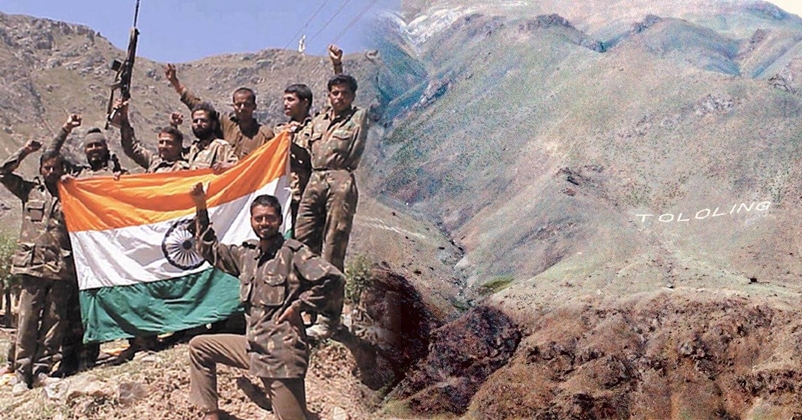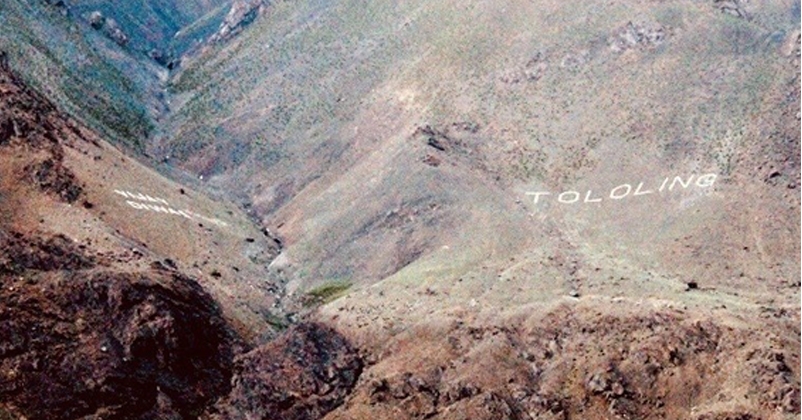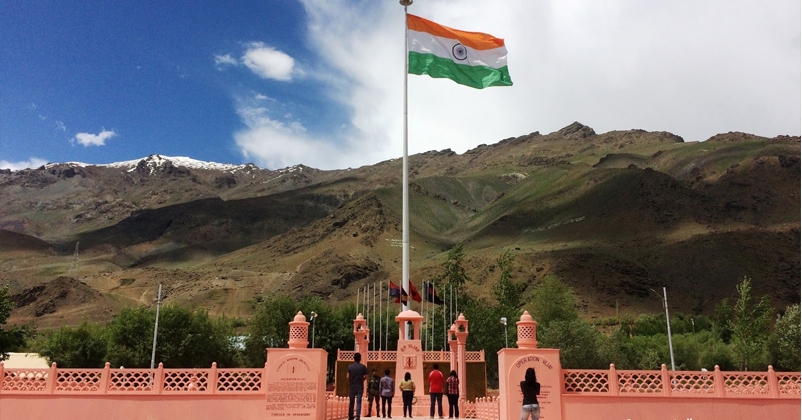11 June; Battle of Tololing- The turning point of 1999 Kargil War
11 Jun 2020 15:17:31

The battle of Tololing was one of the longest and most fiercely fought battles in the history of Indo-Pakistan warfares that proved decisive for the victory of India in the Kargil War of 1999. It was one of the pivotal battles between India’s armed forces and troops from the Northern Light Infantry, aided by other Pakistan backed irregulars high up in the mountains of Drass in the summer of 1999. It was the beginning of May when that year Pakistani intruders when occupied Tololing hills, the dominant position overlooking the crucial Srinagar-Kargil-Leh highway NH1D, it became the utmost priority of the Indian Army to clear Tololing despite serious challenges like harsh terrain and weather conditions.
During 1999 Kargil War, the Indian Army’s casualties on the Tololing peak were half of the entire losses in the whole war as India lost most of its soldiers due to the icy heights and the treacherous terrain. The frontal charges needed to be mounted in order to reclaim the peaks to dislodge the intruders. The 3-week assault finally culminated with India taking control of the peak and changing the course of the war. Although 23 Indian Soldiers were martyred in the final assault, their sacrifice led India to win over one of the costliest and challenging most battles of the entire war.
Veterans who fought the Kargil war remember that when the initial attack on Tololing was launched on May 22, the army was under the impression that the intruders were terrorists and a handful at that. It emerged later that the top hill had been captured by a company-strength of 100 plus of Pakistani army regulars.

Tololing peak, the battle that changed the course of the 1999 Indo-Pak War and laid the foundation for future successes, including the strategic Tiger Hill
The first reports of infiltrators in Kargil came on May 4, after which Lieutenant Saurabh Kalia of 4 Jat Regiment, led a six-man foot patrol to a forward post in Kaksar sector. Kalia and the sepoys accompanying him were captured by Pakistani troops on May 15, and brutally tortured before their mutilated bodies were returned on June 10. However, the scale of intrusion only became evident to the Indian Army by mid-May. By this time, the enemy held vantage positions in Kargil, Batalik, Mushkoh and Drass. A few days after the intrusion was detected in the Drass sector on May 14th, the 18 Grenadier battalion was taken off counter-insurgency operations in the valley and was ordered to evict the enemy.
Three battalions from Naga, Garhwal and Grenadier regiments tried to make their way up to Tololing from two sides before the Grenadiers could begin operation on May 22 and scaled the intensity of the situation. It was so tensed that two platoons of another Grenadier division were for 16 days stuck on a ridge below Tololing, pinned down by gunfire and artillery barrage pin-pointed by watchers on the heights. Earlier to that, the Commander of the Kargil-based 121 Brigade, in one of the initial briefings, understatedly, had told the officers of Grenadiers' that there were no more than 8-10 infiltrators on the heights so all that needed was to just go up and bring the enemy down by their neck.
In the meanwhile, Indian soldiers in Drass had gotten used to interruptions in radio messages that were frequency intercepts by the Pakistani Army. The horrid situation led the army to mobilize troops immediately thereby assigning different task forces to repel the intruders. By May 31st, two attempts had been made to re-capture Tololing top and another was attempted on the intervening night of June 2 and 3. If one could even imagine, the movement was only possible during bad weather or on moonless nights when the wind screamed along with gunfire and temperature hovered between -5 and -11 degrees centigrade.
From the base, for an acclimatized soldier to climb the 16,000 ft to the top, it would take at least 11 hours.
While 18 Grenadiers, an Infantry Unit, played a crucial role in the capture of Tololing, the final assault that defeated the enemy was launched by 2 Rajputana Rifles on the intervening night of June 12/13. The hard lessons learned by the Grenadiers were being absorbed by the Rajputana Rifles.
For a week before the final assault on June 12, the battalion conducted mock operations on a nearby ridge similar to Tololing with them chalking out their assault strategies on a sand and stone model they had designed after a reconnaissance of the Tololing heights from different directions. The weapons and ammunition were test-fired, an exercise to eliminate a defective lot of hand grenades was conducted with the soldiers. Subsequently, early morning on June 13th, the troops of Col MB Ravindranath, commanding officer of the 2 Rajputana Rifles recaptured the key ridge in the Drass Sector after a night-long hand-to-hand fierce battle in which the Unit lost one officer, two JCOs, and seven Jawans. But owing to the brave hearts’ determination the peaks of the Drass sector got free from intruders and a vital link to the 510-km long Srinagar-Kargil-Leh highway got clear.

A suicidal mission, ‘the battle for Tololing’, which helped to recapture Tiger Hill in June, and broke the Pakistan Army’s back, as per the Army Veterans.
‘It was almost a suicidal mission,’ as was recalled by a major ranked officer once. The Indian Army was losing its soldiers. Crawling up, inch by inch, along the steep, smooth incline in the face of blanket firing by the intruders made the troops' task challenging and highly risky. However, once Tololing was taken, it took just six days for Indian troops to notch up a string of successes by evicting well-entrenched intruders on four nearby outposts, Point 4590, Rocky Knob, Hump and Point 5140.
On June 24th, 18 Grenadiers along with another Infantry battalion, 8 Sikh Regiment, was tasked to capture Tiger Hill. The final assault was to be launched on the night of July 3. In the words of Col Khushal Thakur, Commanding Officer of18 Grenadiers who lost 34 men, including his second-in-command Lieutenant Colonel R Vishwanathan, in the recapture of Tololing and Tiger Hill,“thanks to the lessons learned in Tololing, we were fully prepared and equipped. We had full artillery support, we had instructors from the High-AltitudeWarfare School with us, there was adequate time for reconnaissance before missions, adequate clothing and no problem with logistics.”
The fierce battle for Tiger Hill gave the Indian army heroes like Sub/Major Yogendra Singh Yadav and Col Balwan Singh, who were later awarded the Param Vir Chakra and the Maha Vir Chakra, respectively. Both brave hearts led commandos during the final assault on Tiger Hill which was captured on July 4. Only a day later, on July 5, the then Pakistan PM Nawaz Sharif announced the pull-out of Pakistani troops from Kargil. Pakistan army dropping its weapons started withdrawing a week later.
On July 26th, India recaptured all the peaks, bringing the Kargil war of 1999 to an end with a remarkable victory over Pakistan. It was the day when India announced the complete eviction of Pakistani troops.
The ferocity of the Tololing battle was at first under-rated by the Commanders of the Indian Army who probably miscalculated the wildness and sustaining power of the intruders but despite all odds, the bravest of all, Indian soldiers admirably won over their lost ground. While India had 527 of its soldiers martyred in the war, Pakistan disclosed a figure of 453, which experts say is highly under-reported.